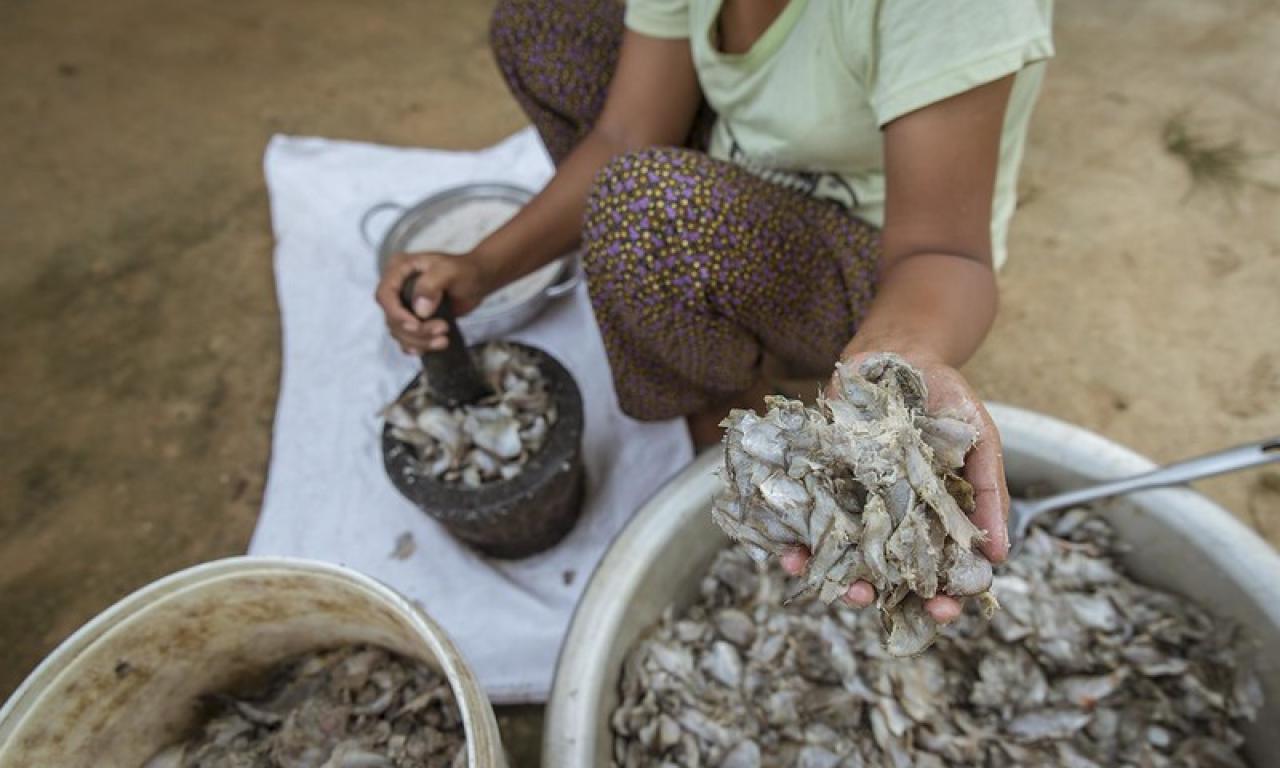
- Prahoc – a traditional, fermented fish product in Cambodia – holds particular importance for low-income households in Cambodia due to its affordability, nutritional value and long shelf life.
- Despite the multiple benefits of Prahoc, there are concerns regarding its food safety and elevated sodium chloride content.
- Addressing these food safety concerns would boost Prahoc's value in offering its numerous advantages across the value chain.
World Nutrition Day, a yearly occasion that highlights the significance of nutrition in promoting health and well-being globally, is a fitting occasion for reflecting on nutrition's vital role in improving livelihoods and safeguarding food and nutrition security, particularly in low- and middle-income countries.
Proper nutrition plays a pivotal role in maintaining optimal health and preventing diet-related illnesses. A recent study, Nutrient composition and microbial food safety of a locally-processed fish product in Cambodia, published in the Aquatic Ecosystem Health & Management journal, provides valuable insights into the nutritional value and safety aspects of Prahoc, a traditional, fermented fish product in Cambodia.
Recognizing the multiple benefits of Prahoc
Prahoc has immense cultural and culinary significance in Cambodian diets. Cambodians have been consuming Prahoc for generations and it serves as a key source of protein and essential nutrients in their diet. According to a 2016 Cambodia socio-economic survey, Prahoc is considered the most important staple food for rural Cambodians after rice.
Prahoc holds particular importance for low-income households in Cambodia due to its affordability, nutritional value and long shelf life. As a fermented fish product, Prahoc is relatively inexpensive compared to fresh fish, making it a more accessible source of animal protein for families with limited financial resources.
Its nutrient density, including essential fatty acids and minerals, helps address nutritional deficiencies common among low-income households. Additionally, Prahoc's extended shelf life allows for food preservation, reducing dependence on frequent and costly trips to the market and preventing food loss and waste.
Addressing concerns on food safety
Despite the multiple benefits of Prahoc, there are concerns regarding its food safety, including the potential presence of harmful bacteria and parasites in the fermented fish paste. If the raw fish is not handled properly throughout the fermentation process, it may contribute to the growth of pathogens. Additionally, Prahoc contains elevated levels of sodium chloride – a component of salt – due to its fermentation process. Excessive sodium intake can lead to high blood pressure and cardiovascular diseases.
According to the study, all the samples analyzed met the safety standards set by Cambodia for Prahoc. Furthermore, there was no evidence of parasites found in the samples. While the authors observed that local Prahoc processing adhered to hygienic standards, they concluded that there is room for improvement, with a particular emphasis on preventing fly infestations.
While additional tests are required to address concerns related to Listeria, Salmonella and Vibrio bacteria, these findings provide assurance that the Prahoc samples tested were in compliance with safety regulations, highlighting its potential as a safe food choice. Addressing these food safety concerns would boost Prahoc's value in offering its numerous advantages across the value chain.
Improving a highly valued product
Despite the fact that the weight of Prahoc equals one-third of the weight of the original fresh fish utilized, the unit sale of Prahoc is nine to sixteen times that of fresh fish. The value add of Prahoc contributes significantly to household incomes.
Prahoc's ability to absorb surplus harvests or low-value fish is also highly valued. It serves as a long-term preservation method, ensuring that abundant harvests do not go to waste. In the seasonal Cambodian food production system, Prahoc enables access to fish during lean periods, ensuring a continuous food supply. Moreover, Prahoc production reduces post-harvest food loss by repurposing fish that would otherwise be unsold.
Efforts to reduce the salt content in Prahoc production while maintaining microbial safety hold great potential. Such initiatives can extend the reach of Prahoc while addressing health concerns associated with high sodium levels. Consequently, producers would greatly benefit from ongoing efforts to enhance and standardize production processes, develop new markets and prioritize food safety measures.
By recognizing and strengthening the multifaceted advantages of Prahoc, including its economic value, ability to prevent food loss and waste and potential for improvement, the growth of the industry can be sustained while benefiting from its positive impact on livelihoods, as well as food and nutrition security.
